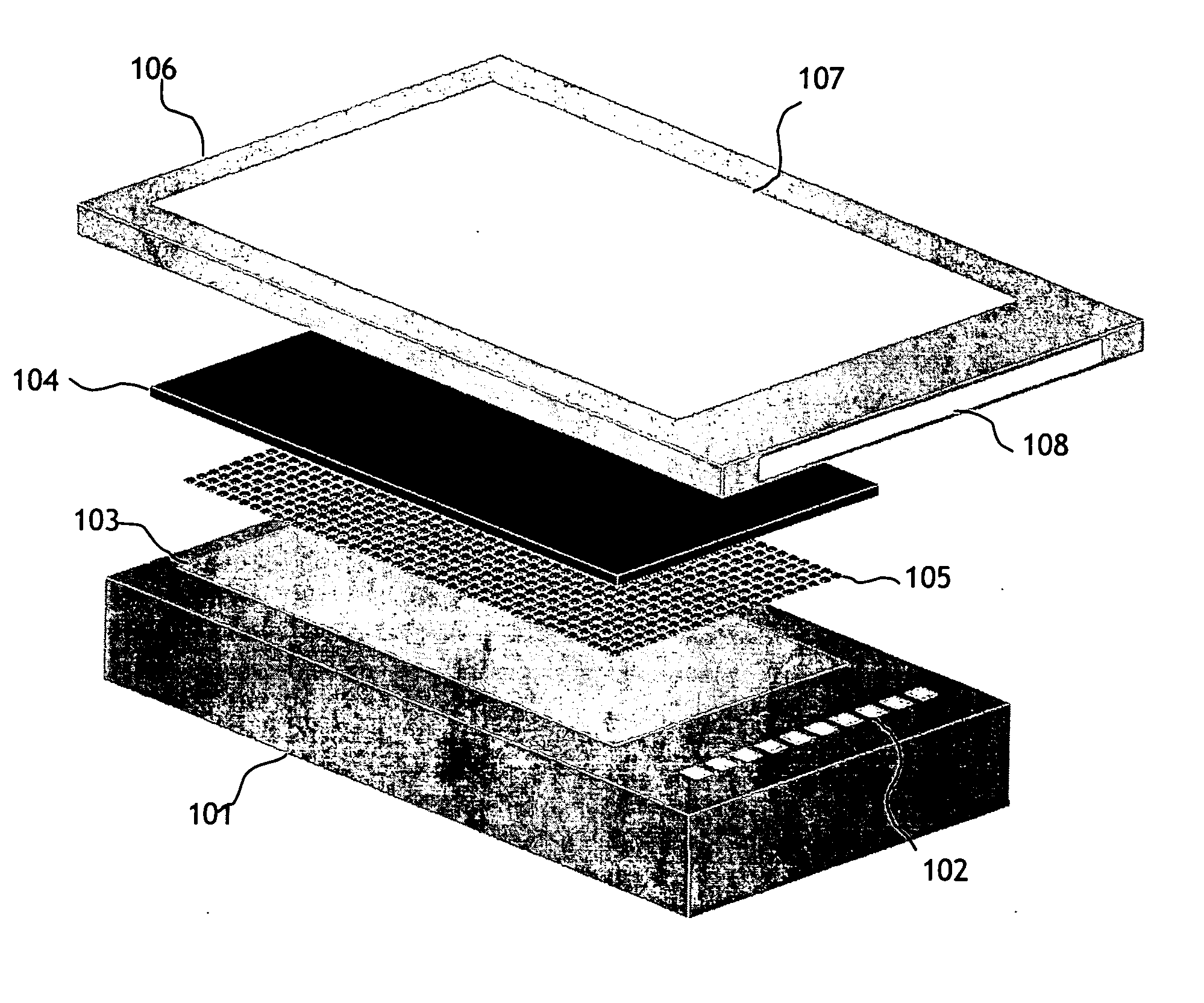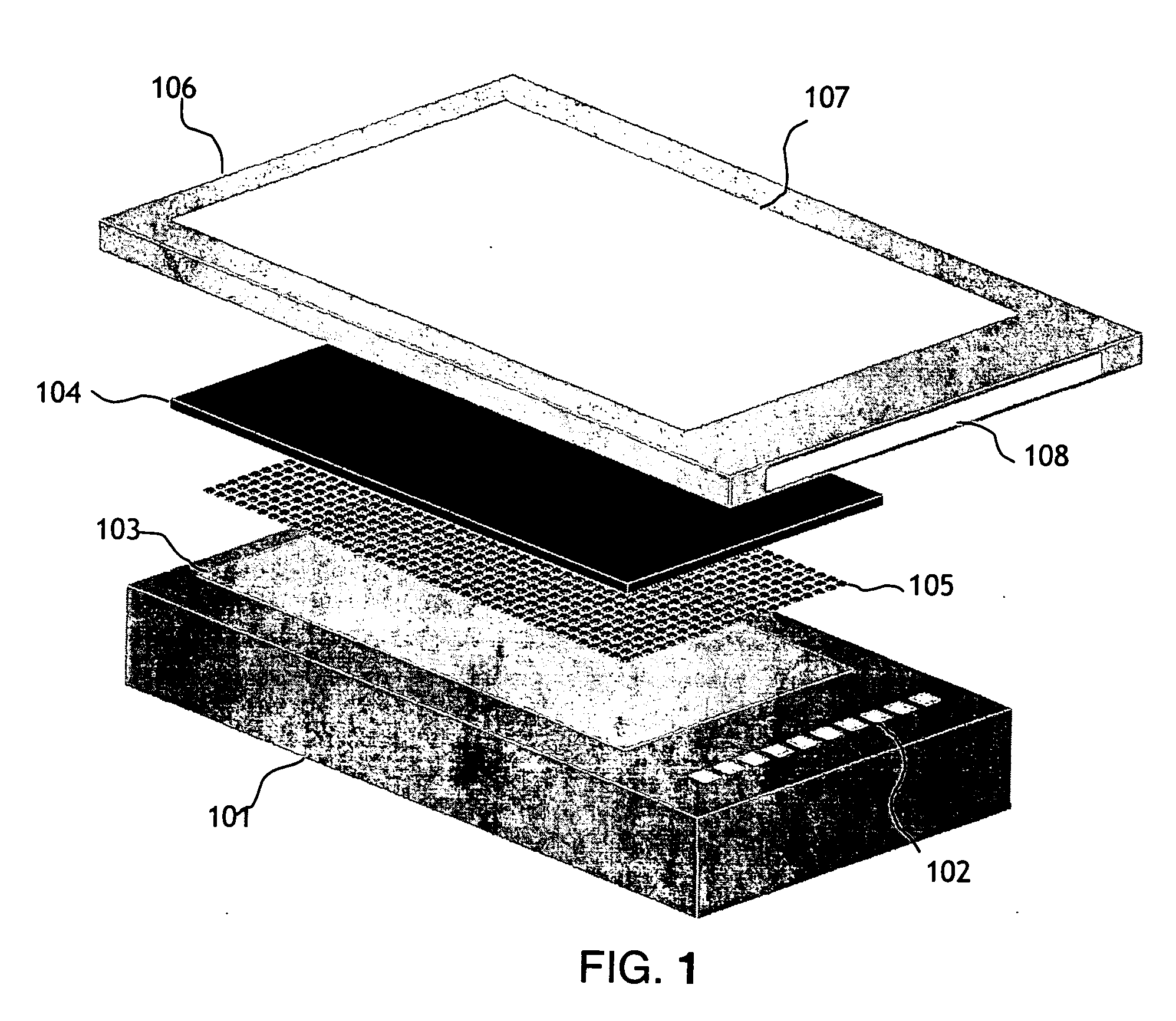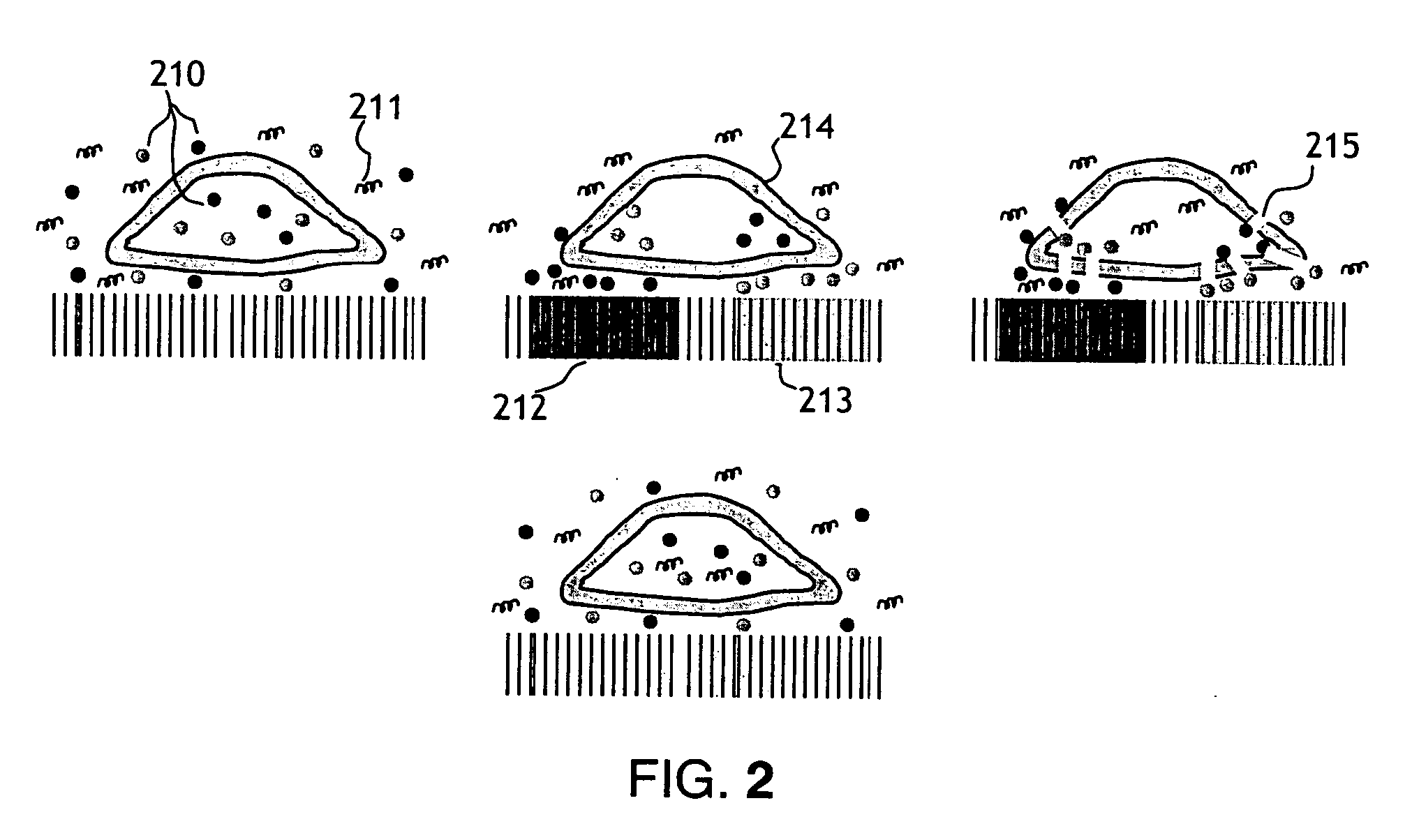Microelectronic cell electroporation array
a microelectronic cell and array technology, applied in the field of electroporation, can solve the problems of multifactoriality of most diseases, increasing the search volume, and becoming more eviden
- Summary
- Abstract
- Description
- Claims
- Application Information
AI Technical Summary
Benefits of technology
Problems solved by technology
Method used
Image
Examples
Embodiment Construction
[0025] The present invention, shown in FIG. 1, has 3 primary components; a microelectronic stimulator array (101), a conducting electrode material (104) which the cells or tissue are cultured on and a fluid flow chamber (106) and apparatus to control the solutions of genes, gene silencing RNAi, gene inhibition agents, drugs or other substances to be presented for entry into the cells. The timing of the fluid flow and the active areas of the stimulator array will be controlled via a computer interface.
[0026] The microelectronic silicon stimulator chip (101) has 10 bond pads (102) which are connected to the power supply, clocks, biases and data I / O. The chip also has an active area (103) which has a number of vias which are connected to the microwire glass electrode (104) with indium bump bonds (105). The flow chamber (106) is attached above the microwire glass electrode. The chamber has an optical window on the top (107) (that can be coated with a transparent electrode material, suc...
PUM
| Property | Measurement | Unit |
|---|---|---|
| diameter | aaaaa | aaaaa |
| cellular transmembrane voltage | aaaaa | aaaaa |
| transmembrane voltages | aaaaa | aaaaa |
Abstract
Description
Claims
Application Information
 Login to View More
Login to View More - R&D
- Intellectual Property
- Life Sciences
- Materials
- Tech Scout
- Unparalleled Data Quality
- Higher Quality Content
- 60% Fewer Hallucinations
Browse by: Latest US Patents, China's latest patents, Technical Efficacy Thesaurus, Application Domain, Technology Topic, Popular Technical Reports.
© 2025 PatSnap. All rights reserved.Legal|Privacy policy|Modern Slavery Act Transparency Statement|Sitemap|About US| Contact US: help@patsnap.com



